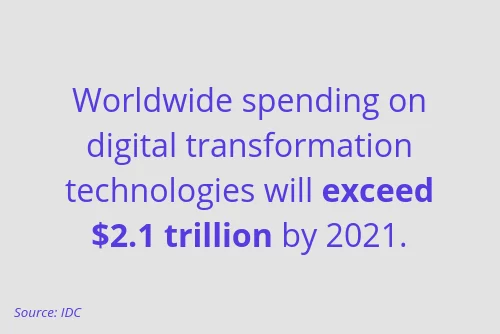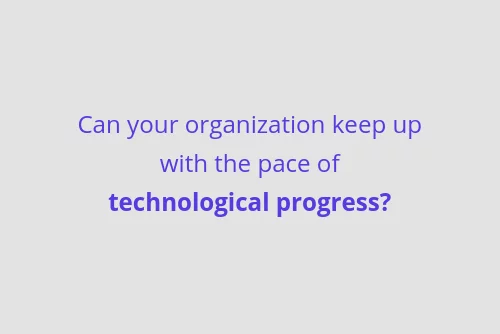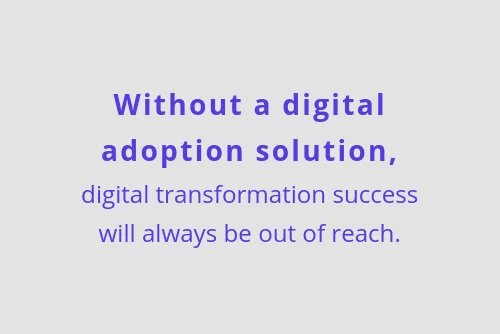Digital transformation and digital adoption. They sound alike, and they’re sometimes (mistakenly) used interchangeably. But while these two terms are closely related, there is a critical distinction between them.
Digital transformation is like deciding to upgrade your mode of transportation and buying a new car. It could be the latest model with all the bells and whistles, but if you don’t know how to drive, your new investment will be pretty useless.
Digital adoption is having the ability to actually use your new digital tools the way they are intended. If you pursue digital transformation without prioritizing digital adoption, success will always be out of reach.
Digital adoption vs. digital transformation
The best way to understand the difference between the two terms is to define each one.
Digital transformation is an ongoing process in which businesses replace manual and legacy systems with advanced digital ones that enable greater efficiency, new capabilities, and better customer experience. The end goal is to reach digital maturity.
Digital transformation requires being in a constant state of change. Although businesses are always trying to keep up with technological progress, many fall into the path of digital Darwinism.
Digital Darwinism is a phenomenon in which organizations can’t adapt fast enough to keep up with the rate of technological and social evolution.
The only way to avoid digital Darwinism is to achieve digital adoption.
Dive Deeper: The End-All Guide to Digital Adoption
If your users can use your technology investments as they are intended and to the fullest extent, they will be equipped 
Businesses have demonstrated their commitment to digital transformation. IDC reports that spending on digital transformation tools and services will nearly double by 2021, to more than $2.1 trillion. But few have found an adequate digital adoption solution.
Usability drives successful digital adoption
The end goal of digital adoption is reaching a level of mastery on a given platform. You need true engagement to go beyond basic proficiency to reach mastery and achieve digital adoption.
But without a high degree of usability, it is difficult to maintain sufficient levels of user engagement.
Tools that let you monitor the user journey are invaluable for improving usability because you can get a clear look into where users struggle, where they drop off, and where they can benefit from assistance.
Digital solutions that enable contextual guidance and real-time navigational support are invaluable for boosting usability. Based on the user’s context (such as the current process, behavior, time on page, etc.) these tools proactively deploy tips and support so the user can complete any process easily.
A Digital Adoption Platform (DAP) is the ultimate digital adoption solution. Request a demo today.
Digital adoption is your key to winning in digital transformation
To put it simply, without digital adoption, your digital transformation cannot succeed.
But with a clear strategy and solid solution for achieving digital adoption, you’ll be in the position to capitalize on the full range of your technology investments.



